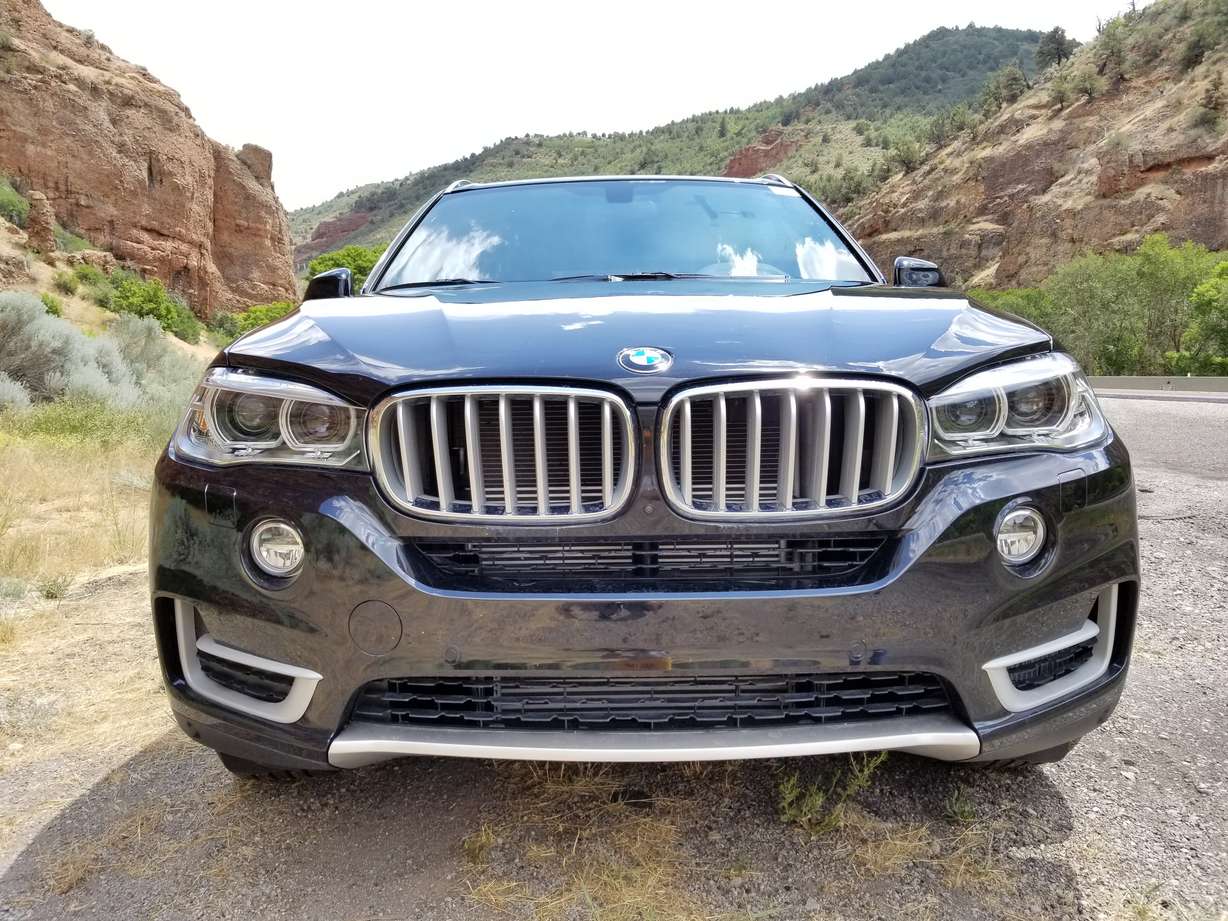Not everyone is ready to take the plunge and buy a fully electric car, which makes plug-in hybrids (PHEVs) a great ‘stepping stone’ option.
These cars combine an internal combustion engine with electric power just like every other hybrid car but, as the name suggests, you can charge them from a plug, just like a regular EV.
The bigger battery and plug-in charging give plug-in hybrids a long EV range, with many models now officially able to go over 60 miles on electric power alone.
This means that owners who can charge at home or at work and never exceed the pure-electric range can use next to no fuel in everyday driving. Then, on longer trips, there’s no range anxiety because you can use the internal combustion engine (ICE) and refuel as you would a petrol or diesel car.
The plug-in hybrid sounds like the best of both worlds, but it isn’t quite as simple as that. Because they effectively have two powertrains—one petrol and one electric—PHEVs can be heavy and expensive.
The weight affects fuel economy when you do use the ICE and, together with the price, means that plug-in hybrid tech tends to be offered in larger cars.
Our expert road testers have thoroughly tested every PHEV on sale in the UK, and using their verdicts, we’ve rounded up the best plug-in hybrid cars to buy right here.
We’ve given you a broad cross-section of what’s on offer including the top models available of each type from SUVs to executive saloons and estates.
1. BMW 530e
The BMW 5 Series has long been a staple of the company car and executive car worlds, and the good news is that its loyal buyers can now reap the benefits of plug-in hybrid power. The BMW 530e may be partly electric, but it’s still just as enjoyable to drive as a 5 Series should be.
It’s equally impressive inside, too, where you’ll find a class-leading interior that’s very well put together, ergonomically designed, and filled with top-quality tech.
Unfortunately, the 530e’s plug-in powertrain does come at a fairly sizeable additional outlay compared with the combustion models, but its reduced running costs will help to mitigate this initial financial sting.
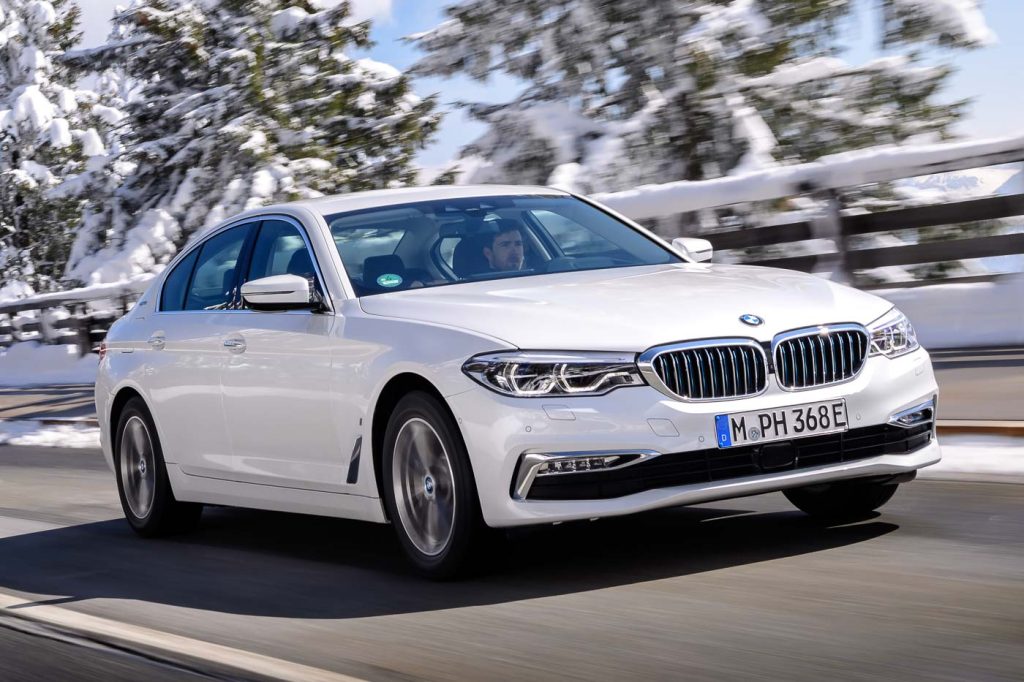
Alternatively, if you’re thinking of making the jump to fully-electric motoring, there’s always the option of the BMW i5. If you’re sticking with PHEV for now, though, the 530e is a top choice that was officially crowned as our Premium Hybrid Car of the Year.
The most compelling alternative to the 530e is BMW’s own i5, which throws out the petrol engine for an all-electric, very powerful, and even more refined drivetrain.
But another to consider is the somewhat unusual Mercedes E 300 de, which is actually a diesel plug-in hybrid, for potentially greater efficiency even when the battery is depleted. At nearly £68,000 it’s more expensive than the BMW, though.
Also Read: 10 Classic Cars That Were Once Popular but Are Now Forgotten
2. Mercedes C 300 e
Much like the BMW 530e, the Mercedes C 300 e is another plug-in hybrid version of a traditional German executive saloon.
This variant of the Mercedes C-Class offers a zero-compromise alternative for company car drivers who aren’t ready to go fully electric. It’s capable of driving up to 67 miles on battery power, so you’ll have to cover quite some distance before waking the 2.0-litre petrol engine.
Its styling has been influenced by Mercedes’ flagship S-Class, as has the interior that feels almost as plush as the limousine’s. That car’s incredibly slick and intuitive MBUX infotainment system is fitted, too, displayed on a fantastic 11.9-inch touchscreen that’s standard on every model.
You’ll find the Mercedes C 300 e’s closest rival, and most prominent alternative, next up in this list: the BMW 330e. A new arrival though is the Audi A5 e-hybrid, arriving in 2025 from around £50,000 with a 295bhp plug-in hybrid setup and up to 67 miles of EV range, matching the Merc.
It might look like just a tidied-up version of the old model, but make no mistake—this is the all-new C-Class. Although the redesign is cautious, it’s genuinely a new skin rather than just a facelift. Inside, the focus is on a big, bold screen interface, much like what you find in the S-Class.
There’s more to it than just that. The plug-in hybrid, named the C 300 e, now features a battery capable of delivering about 60 miles of pure electric range—and it supports fast recharging. That’s a significant game-changer, as I’ll explain shortly.
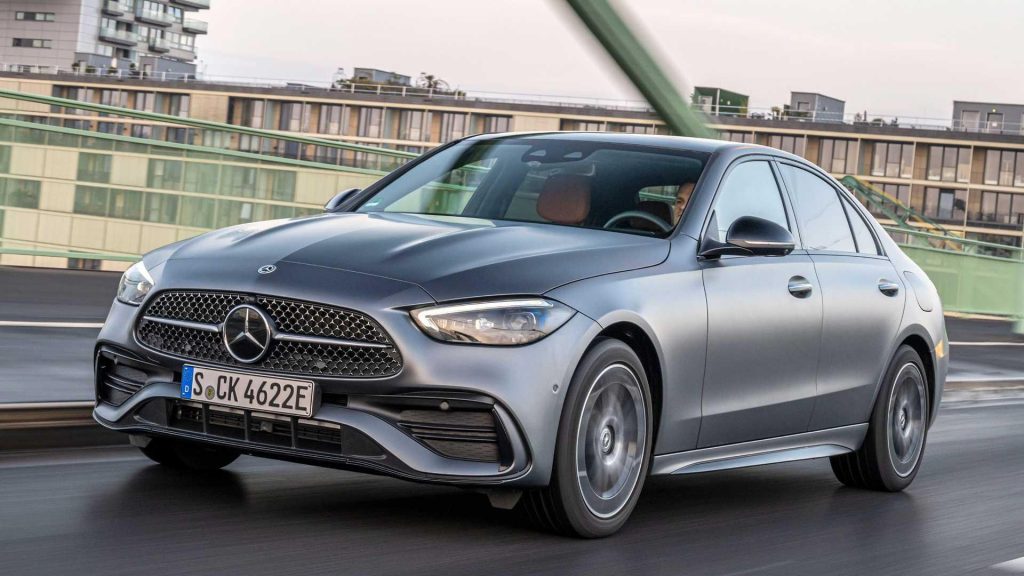
Yes, unfortunately. In the UK, you can’t get this model just yet. Nonetheless, we did manage to drive this car on Britain’s famously three-dimensional road surfaces.
Previously, we tested the new C in Germany, where the models we drove included optional adaptive suspension and four-wheel steering—both features that won’t be available in the UK.
However, the German C 300 e we tested is now pretty much what the British version will be like. It uses air springs at the rear and coil springs at the front. The dampers aren’t electronic, and the steering is handled solely by the front wheels.
If you want to learn about the other engines and the cabin experience, be sure to check out our main reviews of the saloon and estate versions.
It packs a 25.4kWh battery—that’s even bigger than the original Nissan Leaf’s, and those drivers didn’t have the safety net of a combustion engine to rely on.
This battery size provides an electric range of around 60 miles, powering a 129bhp electric motor. If drivers resist the urge to accelerate aggressively, most people could easily cover the majority of their daily driving purely on electric power without the engine kicking in.
The hybrid system is even smarter when the electric motor and combustion engine work together.
Enter a destination into the satnav, and the car calculates the optimal moments to use each power source—favoring the electric motor for slower sections and the petrol engine for motorway cruising.
It even detects downhill stretches to cut back on engine use and regenerate the battery. The goal is to get you to your destination with the battery nearly depleted.
On a 100-mile trip through the Bedfordshire countryside, including a decent blast down the M40, I achieved better than 80 miles per gallon, plus one full battery charge.
Also, and this remains unusual for a PHEV, it supports DC rapid charging. So, on a long trip, you could stop for a quick meal, plug into a 50kW charger, recharge the battery in about 30 minutes, and then continue. This effectively ends the common belief that long journeys in a PHEV are basically all-petrol.
The battery does take up some boot space by raising the floor, but not so much as to prevent the launch of the C 300e estate at the same time.
Many PHEVs, including Mercedes’ own A250e and its variants, feel clunky, especially when you request sudden acceleration after a period of gentle cruising with the engine off. This one handles it better.
Press the accelerator hard, and the electric motor has enough immediate power to cover while the 2.0-litre engine wakes up and the transmission downshifts. There is still a slight pause, so you might want to give the car a heads-up by nudging the minus paddle shift.
Outside of that, the driving experience is smooth—and quiet, too—mainly because the engine isn’t being heavily worked most of the time. But when you want speed, the combined output of 312bhp makes this a quick car.
Slowing down, however, is a bit more complicated. I’m no engineer, but I suspect this is because the system tries hard to regenerate energy while simultaneously downshifting through the 9-speed transmission.
You feel this most when approaching, say, a roundabout from 70mph: keeping steady pressure on the brake pedal results in inconsistent deceleration. This same issue affects pedal feel every time you touch it.
3. Hyundai Tucson PHEV
The Hyundai Tucson has earned plenty of praise, having won the title of Mid-size SUV of the Year for four consecutive years.
It’s a standout family SUV, thanks in part to its upscale exterior styling, which gives it the appearance of a much more expensive car. Inside, the Tucson impresses with its high-quality build and modern features, making it competitive with the best in class.

There are several powertrain options available, but choosing the plug-in hybrid variant provides up to 38 miles of electric-only range and CO2 emissions as low as 29g/km. With 249bhp on tap, it’s also reasonably quick for its class.
If you’re exploring alternatives, the Kia Sportage PHEV is a nearly identical sibling to the Tucson and might catch your interest, particularly with its slightly better electric range. Other worthy contenders include the Skoda Kodiaq iV, Toyota RAV4, Suzuki Across, Nissan Qashqai e-Power, and the Honda CR-V e:PHEV, which starts around £49,000.
4. Kia Sportage PHEV
The Kia Sportage, a close relation to the Hyundai Tucson, is another mid-size SUV that manages to balance eye-catching design with everyday usability.
Its futuristic exterior styling might not appeal to everyone, but inside, the cabin is sleek and functional, featuring twin 12.3-inch displays and a layout that feels both premium and spacious. The infotainment system is user-friendly, and the overall build quality holds up well.
As a plug-in hybrid, the Sportage offers a 43-mile electric-only range, and although it’s the most expensive variant in the lineup at over £40,000, its 25g/km CO2 figure makes it an attractive option for company car drivers.
For those considering something similar, the Hyundai Tucson remains the most direct alternative, albeit with a shorter warranty (five years versus Kia’s seven).
Some buyers assume that opting for a premium brand guarantees a better car, but in the family SUV segment, the Kia Sportage makes it hard to justify spending more.
Beneath its distinctive boomerang-shaped headlights and sturdy body lies a spacious interior and a broad selection of trim levels to suit a variety of budgets.
Additionally, all of the Sportage’s engines include some form of hybrid technology—whether mild hybrid, regular hybrid, or plug-in hybrid—to boost efficiency and reduce emissions.
Kia has also positioned the Sportage competitively on price, with the base model costing less than closely related rivals like the Hyundai Tucson, Ford Kuga, and Renault Austral.
This competitive pricing puts the Sportage in direct competition with popular models such as the Nissan Qashqai, the fun-to-drive Seat Ateca, and the practical Skoda Karoq. Overall, the Sportage offers generous interior space, a large boot, and one of the best cabins in its class.
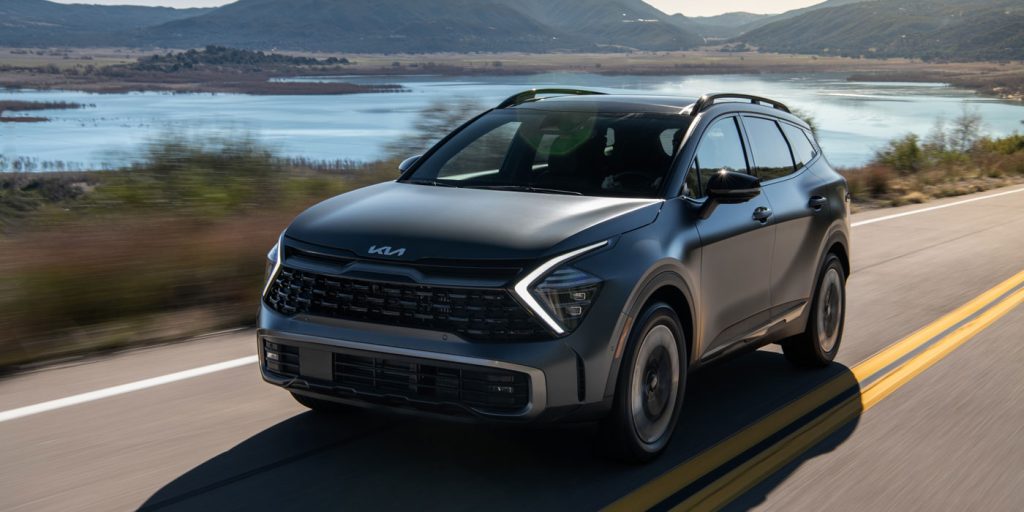
Although the Hyundai Tucson is also competitively priced, the Sportage slightly edges ahead with a more refined driving experience and a longer warranty. Our preferred choice is the entry-level mild-hybrid petrol engine paired with the 3 trim level.
Lower-spec models deliver great value, featuring a smart interior along with generous rear legroom and boot space.
However, rear headroom can feel cramped if you opt for the panoramic roof, and there are no advanced rear-seat features available. Prices start from £26,750 with estimated monthly payments around £336, and leasing deals begin near £308 per month.
In terms of performance, the Sportage offers a comfortable ride, composed handling, and a quiet cabin even at speed. Downsides include a slightly hesitant automatic gearbox and a clutch pedal with vague feedback.
Our favorite engine is the 157bhp 1.6-litre T-GDi mild-hybrid, which comes standard with a six-speed manual gearbox, though a seven-speed automatic is optional.
The manual accelerates from 0 to 62 mph in 9.9 seconds, providing enough punch for everyday driving, overtaking, and motorway cruising. The automatic is marginally faster but the difference is hardly noticeable.
If more power is desired, the 212bhp Sportage HEV— a regular hybrid capable of driving short distances on electricity alone—is worth considering. It managed 0-60 mph in 7.1 seconds during tests, slightly slower than the Hyundai Tucson Hybrid but still sufficiently lively.
One minor drawback is the HEV’s six-speed automatic gearbox, which can be slow to downshift when accelerating aggressively. Most HEVs are front-wheel drive, but the AWD GT-Line S offers all-wheel drive.
The Sportage plug-in hybrid (PHEV) provides up to 40 miles of electric-only range, depending on the trim, comes standard with all-wheel drive, and delivers 248bhp.
Despite the extra power, its acceleration is similar to the HEV’s, and maximum performance requires switching the drive mode from Eco to Sport so the engine and motor work together.
When it comes to ride comfort, the Sportage smooths out potholes and ridges better than the Hyundai Tucson and shows slightly better body control than the Skoda Karoq.
However, it doesn’t match the comfort level of the Volvo XC40, especially on models fitted with 19-inch wheels or the heavier PHEV variant.
The smoothest ride is found in the entry-level 2 trim with smaller 17-inch wheels and large, balloon-like tires. On the motorway, the Sportage feels stable and absorbs bumps well, much like the well-controlled Honda ZR-V.
Handling-wise, the Sportage has never been the best-driving family SUV, but its cornering performance is more than adequate. There is some body lean through corners, but grip is strong, and the precise steering helps drivers place the car exactly where they want it.
The balance of comfort and composure should satisfy most drivers, and it feels a bit sharper than the Hyundai Tucson.
For those seeking a more engaging drive, the Ford Kuga and Seat Ateca are worth considering. Depending on the specification, the Sportage offers up to three driving modes: Eco, Normal, and Sport.
Eco mode prioritizes relaxed driving with lighter steering and softer throttle response to maximize fuel economy, while Sport mode provides heavier steering for greater precision. Four-wheel-drive models add a Terrain mode to improve traction on mud, snow, or sand.
Also Read: 10 SUVs That Are Overbuilt in the Best Way Possible With Power, Luxury, and Road Dominance
5. Skoda Kodiaq iV
The Skoda Kodiaq is a consistent favorite in the family SUV market due to its ability to do just about everything well—from offering a smooth and refined driving experience to boasting great practicality and classy design.
The latest generation enhances its appeal with a more luxurious interior and intuitive technology, which includes physical controls on the steering wheel and dashboard—a welcome feature for many drivers.
In its plug-in hybrid form, the Kodiaq iV is especially impressive, offering up to 71 miles of electric range, which is achievable in real-world conditions. The vehicle also supports 50kW fast charging, allowing for quicker battery top-ups when needed.
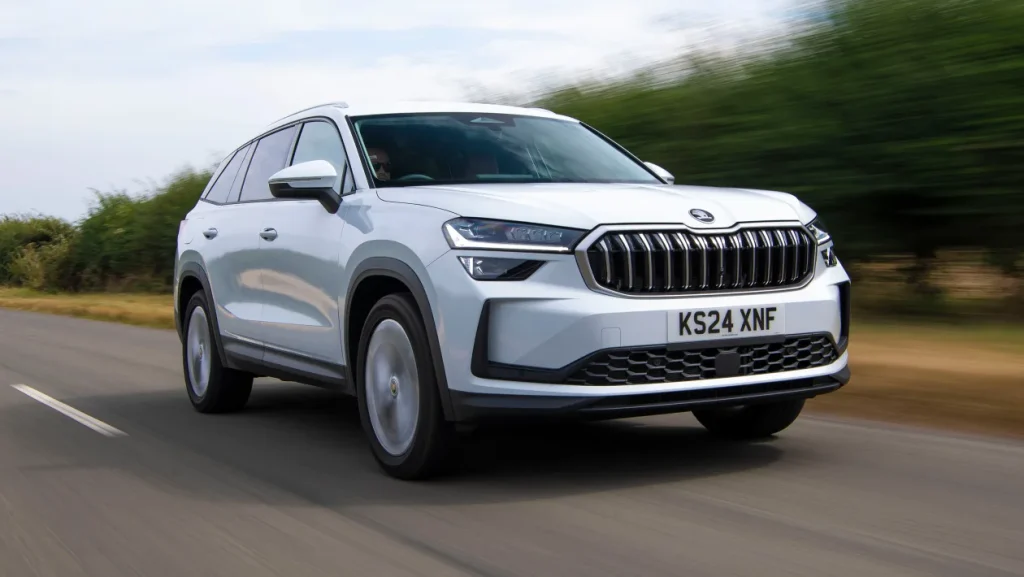
From a tax perspective, the Kodiaq iV is an excellent choice for company car drivers. Its 11g/km CO2 rating and long EV range earn it a low Benefit-in-Kind (BIK) rate of just 5 per cent, increasing slightly to 6 per cent in 2025/2026.
However, this comes with a trade-off—Skoda had to forgo the third-row seats to make room for the larger battery. The benefit is a huge 910-litre boot, making it ideal for families with significant luggage needs.
As an alternative, the £44,000 Cupra Terramar e-Hybrid uses the same 1.5-litre plug-in hybrid system and delivers a comparable 76-mile electric range, though it’s slightly smaller.
You might also consider plug-in variants of the VW Tiguan or the larger Tayron, although the Skoda tends to be more budget-friendly.
Plug-in Hybrids That Are Bound To Fail
Hybrid cars have come a long way from being the outcasts of the automotive world that they were even just fifteen years ago. Today, it’s almost a given that when you walk into any dealership, you’ll find a hybrid or fully electric version of nearly every car model.
In many cases, these vehicles are significantly more fuel-efficient than traditional combustion-powered cars, and they may even prove to be more dependable, given that the technology now demands a high baseline of quality.
However, this is not always the case. Some hybrid vehicles turn out to be considerably less reliable than their all-gasoline counterparts.
In certain situations, hybrids are pushed to market too quickly, receiving less development time than their conventionally powered siblings. In other instances, poor assembly or subpar materials lead to long-term issues.
To help you steer clear of problematic models, we’ve put together a list of the 10 least reliable hybrid cars—vehicles that are likely to cause more stress and expense than they’re worth.
1. 2016 Ford Focus Hybrid
The Ford Focus has historically been recognized as a solid driver’s car, with its reputation stretching back to the original 1998 model. Unfortunately, the 2016 Focus stands out as something of a disappointment in that lineage.
Many owners were dissatisfied with its rather underwhelming driving performance, with the vehicle receiving a score of just 54 out of 100, largely due to what was described as “pretty ropey acceleration.”
The hybrid version of the 2016 Focus failed to address these shortcomings, and it added further issues of its own. The most commonly reported reliability problem involved faulty display screens, a frustrating flaw in an otherwise tech-forward design.
Moreover, this wasn’t an isolated case; the 2017 and 2018 Focus Hybrids also received similarly poor reliability scores. As such, the 2016 Focus Hybrid is generally regarded as a model best avoided if you’re searching for a dependable compact hybrid.
The 2016 Ford Fusion Hybrid offers several advantages, including impressive fuel economy, advanced technology and safety features, a quiet cabin, and eye-catching styling. However, its infotainment interfaces are less intuitive compared to some rival systems, which may frustrate some users.
For 2016, the base Fusion Hybrid S received an upgraded six-speaker sound system, while the midlevel SE trim features a 10-speaker stereo. Aside from these audio enhancements, the model remains unchanged.
The Fusion Hybrid stands out as a top choice for midsize sedans due to its refinement, excellent fuel efficiency, balanced performance, and modern technology.

Across the country, several listings for this model are available, with prices ranging from around $7,900 to $13,590, featuring cars with varying mileage, owners, and conditions. Many of these listings include desirable features such as backup cameras, Bluetooth connectivity, power driver seats, and USB inputs.
Hybrid technology, once limited to small hatchbacks or compact cars, has become mainstream, with the midsize sedan segment embracing it widely.
The 2016 Ford Fusion Hybrid exemplifies this trend, offering a blend of fuel efficiency, modern styling, and practicality. It shares much of its appeal with the standard gasoline Fusion but adds significant fuel savings with an EPA-estimated 42 mpg combined.
The ride quality remains smooth on highways, and the interior comfortably seats four passengers. Although the battery reduces trunk space slightly compared to the non-hybrid version, cargo capacity remains competitive with other hybrid sedans.
On the technology front, the Fusion Hybrid offers several advanced safety features, including forward-collision avoidance, blind spot monitoring, and adaptive cruise control.
However, the MyFord Touch touchscreen interface, which controls most audio, navigation, and phone functions, can be slow to respond despite incremental improvements. The Sync voice command system provides a more responsive alternative for handling basic tasks.
While the Fusion Hybrid excels in many areas, rivals like the Honda Accord Hybrid, which boasts a higher EPA estimate of 47 mpg combined, and the well-rounded Toyota Camry Hybrid, with 41 mpg combined, are also strong contenders. Regardless, the Fusion Hybrid remains a favorite worth test-driving.
Performance-wise, the Fusion Hybrid combines a 2.0-liter four-cylinder gasoline engine with an electric motor powered by a lithium-ion battery pack, producing a combined 188 horsepower.
This powertrain drives the front wheels through a continuously variable transmission (CVT). The EPA rates the Fusion Hybrid at 42 mpg combined (44 city/41 highway), which is commendable but slightly below the Honda Accord Hybrid’s top rating of 47 mpg combined.
The Fusion’s estimated driving range is 567 miles, shorter than the Accord’s 743 miles and the Camry’s 697 miles, due to their larger fuel tanks. Both the Camry Hybrid and Accord Hybrid complete this sprint about a second faster, highlighting a slight performance edge over the Fusion.
2. 2014 Mitsubishi Outlander Hybrid
The Mitsubishi Outlander Hybrid remains one of the few models sustaining Mitsubishi’s presence in the European market—a fact that is somewhat disheartening when considering the brand’s legacy with performance icons like the Lancer Evolution.
These days, in many British cities, it’s almost a given that your Uber will show up as an Outlander Hybrid.
It has become an immensely popular choice despite some concerns that surfaced at launch, especially surrounding the ease with which the vehicle’s keyless entry and ignition system could be bypassed.
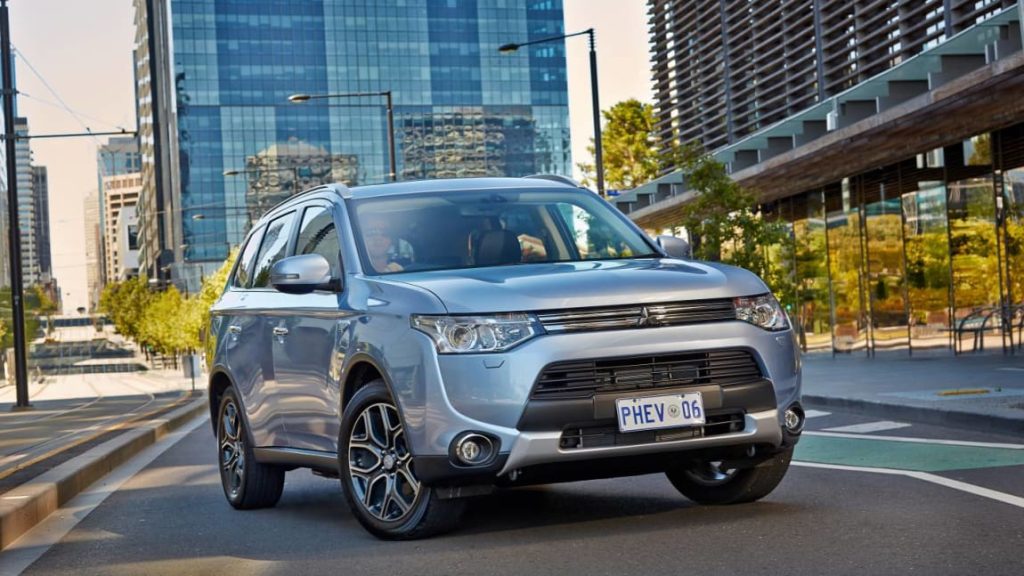
The most common issues plaguing the Outlander Hybrid are electrical in nature. These include problems with the battery, non-engine electrical systems, and the air conditioning unit.
On a more positive note, Mitsubishi has often covered the cost of repairs, even when the vehicle was out of warranty. However, the downside is that these repairs typically take over a week to complete, which can be a significant inconvenience for owners.
3. 2017 BMW X5 Hybrid
The BMW X5 has been a familiar presence on the roads for over two decades and has consistently maintained a reputation as one of the best-driving SUVs that money can buy. It’s certainly not a budget option, but most buyers seem content to pay a premium for what is marketed as a high-quality vehicle.
The 2017 model introduced a plug-in hybrid variant that combined a lithium-ion battery and electric motor with a four-cylinder engine, offering a modern take on efficiency and performance.
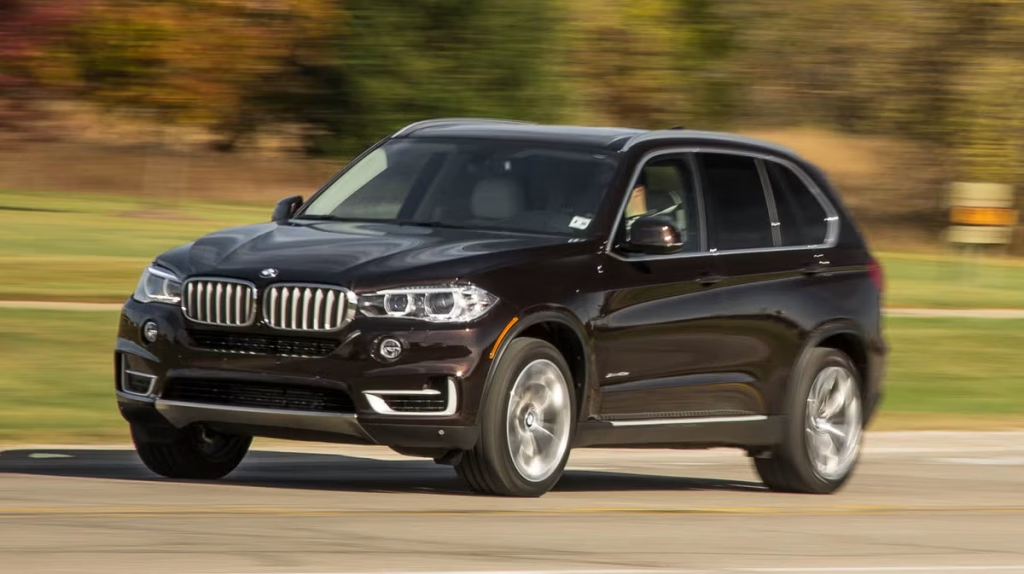
However, the 2017 X5 fell short when it came to reliability. Consumer Reports gave it a disappointing reliability rating of just 1 out of 5 due to recurring issues with the climate control system, suspension, and fuel system.
These kinds of faults are particularly frustrating given the high cost of the vehicle and the expectation that it should be a class-leading choice.
4. 2016 Toyota Prius
In the early 2000s, mentioning the word “Prius” to a car enthusiast was almost considered blasphemous.
Toyota’s hybrid was so frowned upon by performance-minded drivers and automotive journalists that it seemed improbable the model would gain traction—let alone become the best-selling hybrid in the world.
This success was likely due in part to the fact that the Prius was the first truly mass-market hybrid, even if the Honda Insight technically reached North American and European showrooms a bit earlier and was generally seen as more visually appealing.
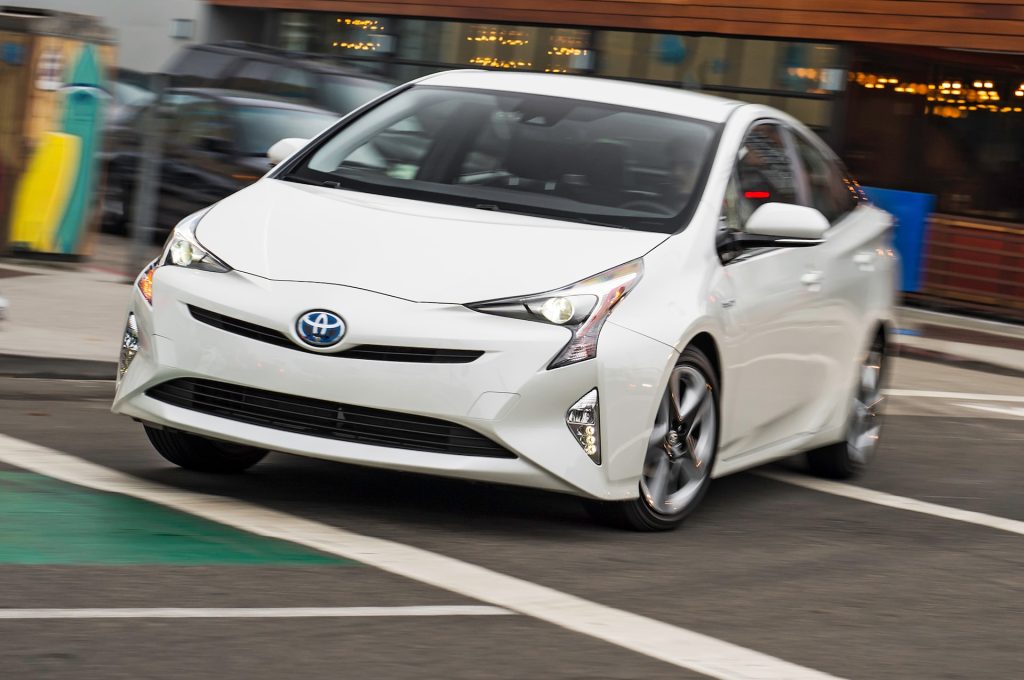
Over time, perceptions of the Prius have softened. It’s now widely accepted as a perfectly functional vehicle, and the rise of hybrid technology hasn’t spelled the end of the internal combustion engine as some feared.
Despite Toyota’s well-earned reputation for building reliable vehicles, the 2016 Prius didn’t quite live up to expectations in this area.
While most of the issues—primarily with the infotainment system and a few other minor components—were relatively small, they were uncharacteristic for the brand. Fortunately, Toyota covered all costs, with no repairs exceeding about $65.
5. 2020 Ford Escape Hybrid
The 2020 Ford Escape Hybrid, our second Ford entry on this list, was introduced as an accessible way to transition into hybrid driving, boasting a starting price below $30,000.
Buyers received a crossover equipped with a 2.5-liter four-cylinder engine paired with two electric motors. For an entry-level model, it delivered an impressively smooth driving experience.
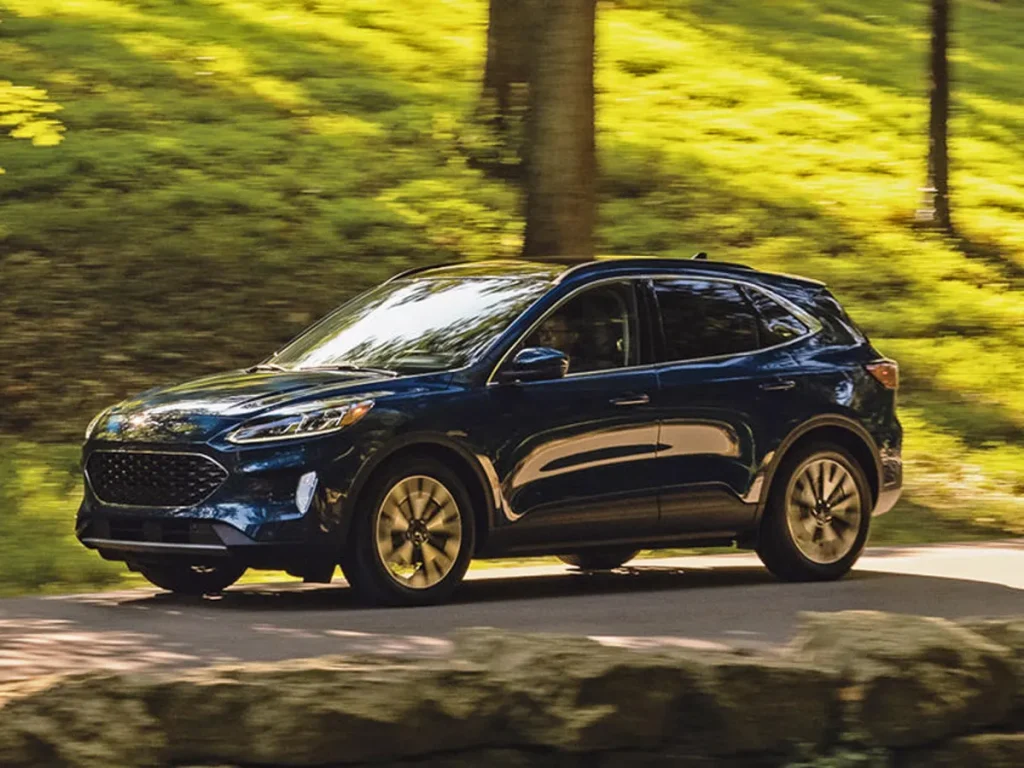
However, the relatively affordable price tag begins to make more sense when you consider the numerous reliability issues the Escape encountered. Chief among these was a frustrating tendency for the infotainment system to crash or freeze.
Additionally, both major and minor engine failures were surprisingly common. When purchasing a used Ford Escape, you’ll find options for either front-wheel drive or all-wheel drive (AWD), along with choices between gasoline engines, gas hybrids, and the plug-in hybrid (PHEV) introduced for the 2020 model year, despite some production delays.
The original Ford Escape debuted in 2001, with the first-generation Ford Escape Hybrid arriving in 2005 as the very first hybrid SUV available on the market. More recently, the latest generation of the Ford Escape launched in 2019 for the 2020 model year.
If you’re considering upgrading from an earlier-generation Escape, the 2020 and newer models offer a bit more space and comfort.
These newer versions are longer and wider, though slightly lower than previous generations. For those seeking a more premium experience, look for a used Escape equipped with the Bang & Olufsen stereo system upgrade introduced in 2021.
The Escape Plug-In Hybrid utilizes Ford’s advanced fourth-generation propulsion system, which features a 2.5-liter hybrid engine paired with an electronic continuously variable transmission.
Driving a Ford Escape Hybrid is straightforward—you simply fill the gas tank and drive it like any other SUV. The same holds true for the Escape Plug-In Hybrid; however, you have the option to plug it in and recharge the battery whenever convenient, helping to save fuel.
It’s important to note that the Escape Plug-In Hybrid has a charging plug, whereas the Ford Escape Hybrid does not. Remember: plugging in an Escape Plug-In Hybrid is never mandatory. As long as there’s gasoline in the tank, you’re ready to drive.

